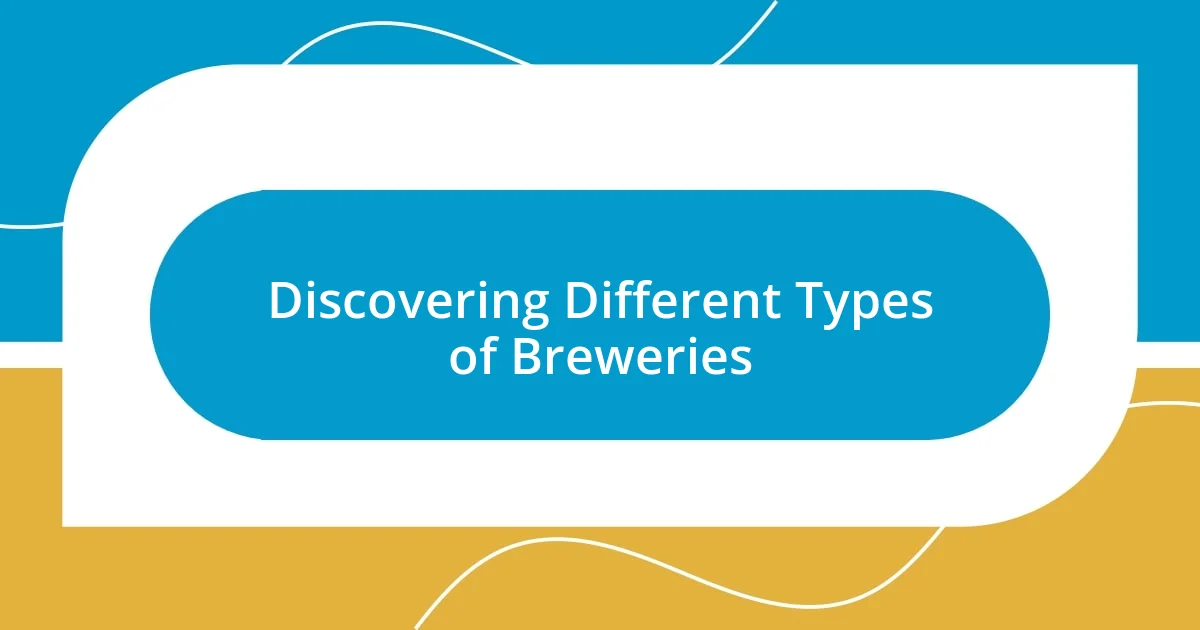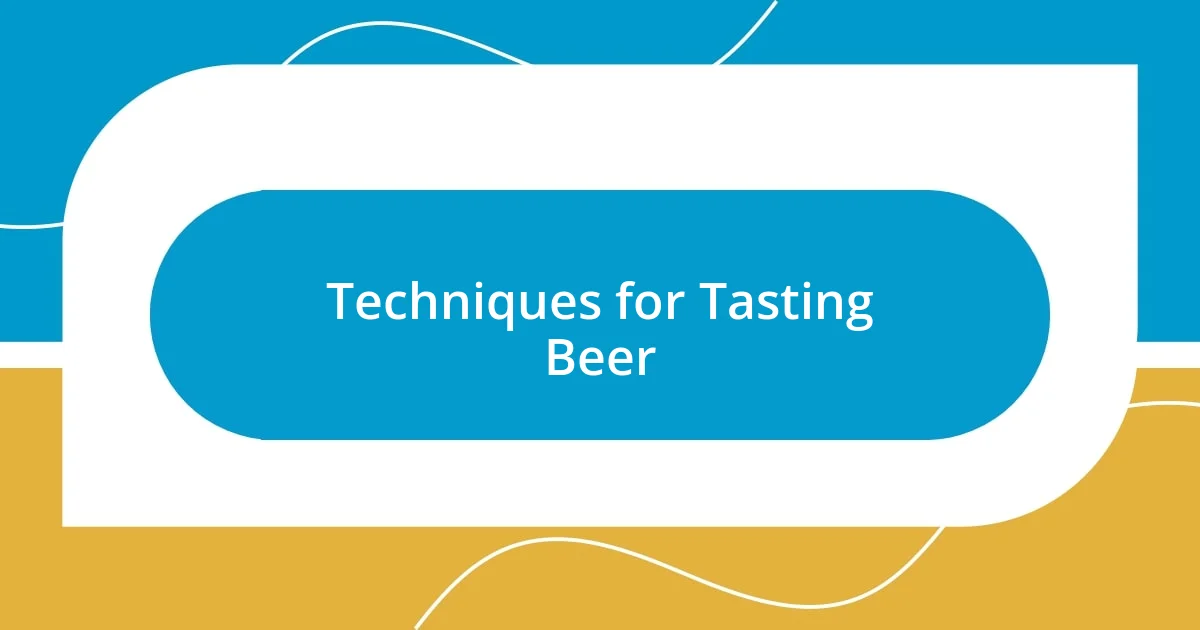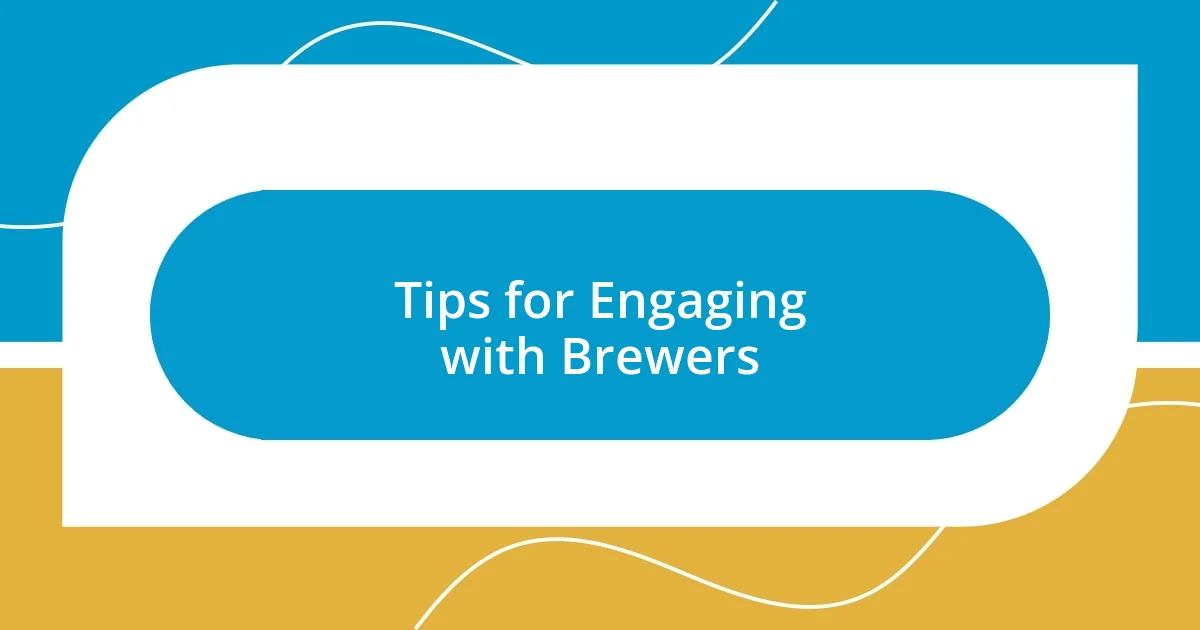Key takeaways:
- Visiting different types of breweries highlights the contrast between creativity in microbreweries and consistency in commercial breweries, enriching appreciation for the craft.
- Experiencing the brewing process underscores the importance of each stage from mashing to conditioning, revealing the science and artistry behind beer-making.
- Engaging with brewers creates meaningful connections and enhances the brewery visit experience, fostering a sense of community and shared passion for craft beer.

Discovering Different Types of Breweries
When I first set foot in a microbrewery, the smell of hops and malt enveloped me like a cozy blanket. I realized that these smaller operations often focus on creativity, producing unique flavors that reflect their local culture. It made me wonder—how many other hidden gems are out there, waiting to be discovered?
Visiting a craft brewery opened my eyes to the artistry behind beer-making. Each brew was a testament to craftsmanship, with passionate brewers experimenting with ingredients. I remember being captivated by a lavender-infused ale; it was so different from the mainstream options I usually gravitated toward. It made me think about how beer can be an expression of art and identity.
On the other hand, touring a larger, commercial brewery showed me a different side of the industry. Here, the emphasis was on consistency and scale, ensuring each bottle tasted the same, no matter where you were. It left me pondering: do we sometimes lose the magic of individuality in the pursuit of mass production? The contrast between these environments deepened my appreciation for all types of breweries, each playing a vital role in the overall beer landscape.

Understanding the Brewing Process
Understanding the brewing process has been a fascinating journey for me, and it all starts with the ingredients. Malted grains, hops, yeast, and water come together in harmony, each bringing its own character to the brew. I recall a moment in a small brewery when I tried mashing malt myself; seeing the grains swell and release their sugars felt like magic, and it truly highlighted the science behind brewing.
As I dived deeper, I learned about fermentation, the stage where yeast works its wonders. Watching the fermentation tanks bubble away while a brewer explained how yeast transforms sugars into alcohol was eye-opening. It reminded me of when I baked bread at home—how the right temperature and patience can yield something extraordinary.
The final steps, conditioning and packaging, might seem mundane, but they are essential for quality control. I had the chance to taste a freshly kegged brew and then, later, one that had been conditioned for weeks. The difference was striking, reinforcing the importance of letting a beer mature. It’s like letting a good story unfold—sometimes, time brings out the best flavors.
| Stage of Brewing | Description |
|---|---|
| Mashing | Convert milled grains into sugars by soaking them in hot water. |
| Fermentation | Yeast converts sugars into alcohol and carbon dioxide, developing flavors. |
| Conditioning | Beer matures and develops complexity, enhancing overall flavor. |

Techniques for Tasting Beer
When it comes to tasting beer, I’ve found that the experience can be as intricate as the brewing process itself. When I first attempted a proper beer tasting, I learned that it’s essential to engage all your senses. The aromas hit you before you even take a sip, and I remember the way my heart raced as I savored the rich scents of a stout—roasted coffee and dark chocolate swirled together, beckoning me to dive in. This moment taught me to appreciate not just the liquid in the glass but the entire sensory experience.
Here are some techniques that I find elevate the tasting experience:
- Look: Observe the color, clarity, and head of the beer. Visuals can tell you a lot.
- Swirl: Gently swirl the beer in your glass to release its aromas.
- Smell: Take a deep breath through your nose. Identify the different aromas—hops, malt, and any special ingredients.
- Taste: Take a sip and let it coat your palate. Notice the initial flavors, the body, and the finish.
- Savor: Allow the taste to linger. Reflect on how the flavors evolve over time.
I vividly recall a summer afternoon spent in a sunny beer garden where I tried a citrus-infused IPA for the first time. The refreshing burst of grapefruit and pineapple was like tasting summer itself. It hit me that tasting beer is not just about the flavors—it’s about the memories they create, the friends you share them with, and the stories behind each brew. That moment sparked a realization: beer tasting is a journey worth savoring, one that connects us to places, seasons, and each other.

Key Takeaways from Brewery Visits
The variety of beer styles is something that truly amazed me during my brewery visits. One memorable tasting session introduced me to sour beers, which I initially thought I wouldn’t enjoy. To my surprise, the bright acidity and complex flavors of a cherry lambic made me rethink my preferences entirely. Isn’t it fascinating how stepping outside our comfort zones can lead to delightful discoveries?
Exploring the stories behind each brewery left a lasting impression on me. I encountered passionate brewers who share their personal journeys, struggles, and triumphs through their craft. At one establishment, the brewer spoke about how their grandfather’s homebrewing sparked a family tradition. Hearing such stories makes each beer carry a piece of its creator’s heart. I often wonder: how many untold stories are woven into our favorite brews?
Lastly, I learned the importance of community in the craft beer scene. Many breweries emphasize local sourcing and collaboration, supporting nearby farmers and businesses. During a visit, I tasted a beer brewed with locally foraged ingredients—a wildflower honey that sweetened the brew splendidly. It made me appreciate the interconnectedness of good beer and the community that nurtures it. Isn’t that beautifully heartwarming?

Tips for Engaging with Brewers
Engaging with brewers can be one of the most rewarding aspects of a brewery visit. I remember chatting with a brewer who spoke passionately about experimenting with flavors. I asked, “What’s the craziest ingredient you’ve tried?” His eyes lit up as he described brewing with basil and how it transformed a simple pilsner into something extraordinary. This moment reinforced for me: asking questions opens doors to deeper conversations and reveals the creativity behind each brew.
When you’re at a brewery, don’t just listen—share your own experiences! I once told a brewer about a homebrew kit I received as a gift, and what started as a casual exchange turned into an animated discussion about the challenges and joys of brewing at home. These exchanges of ideas and stories foster a sense of community. I’ve learned that sharing a personal connection makes the experience more memorable for both parties.
Lastly, pay attention to the atmosphere. The vibes can tell you a lot about the brewery’s ethos. During one visit, I noted how the brewmaster welcomed everyone like family. It’s these warm, personal touches that draw customers in. Have you ever felt an instant connection with a space? That’s what I strive to find in every brewery I visit. Engaging with brewers in this way not only enriches my experience but also highlights the shared love for craft beer that unites us all.














